

How to write standard SEO articles: 46 complete tips, step-by-step details
- 24-07-2022
- chuong xuan
- 0 Comments
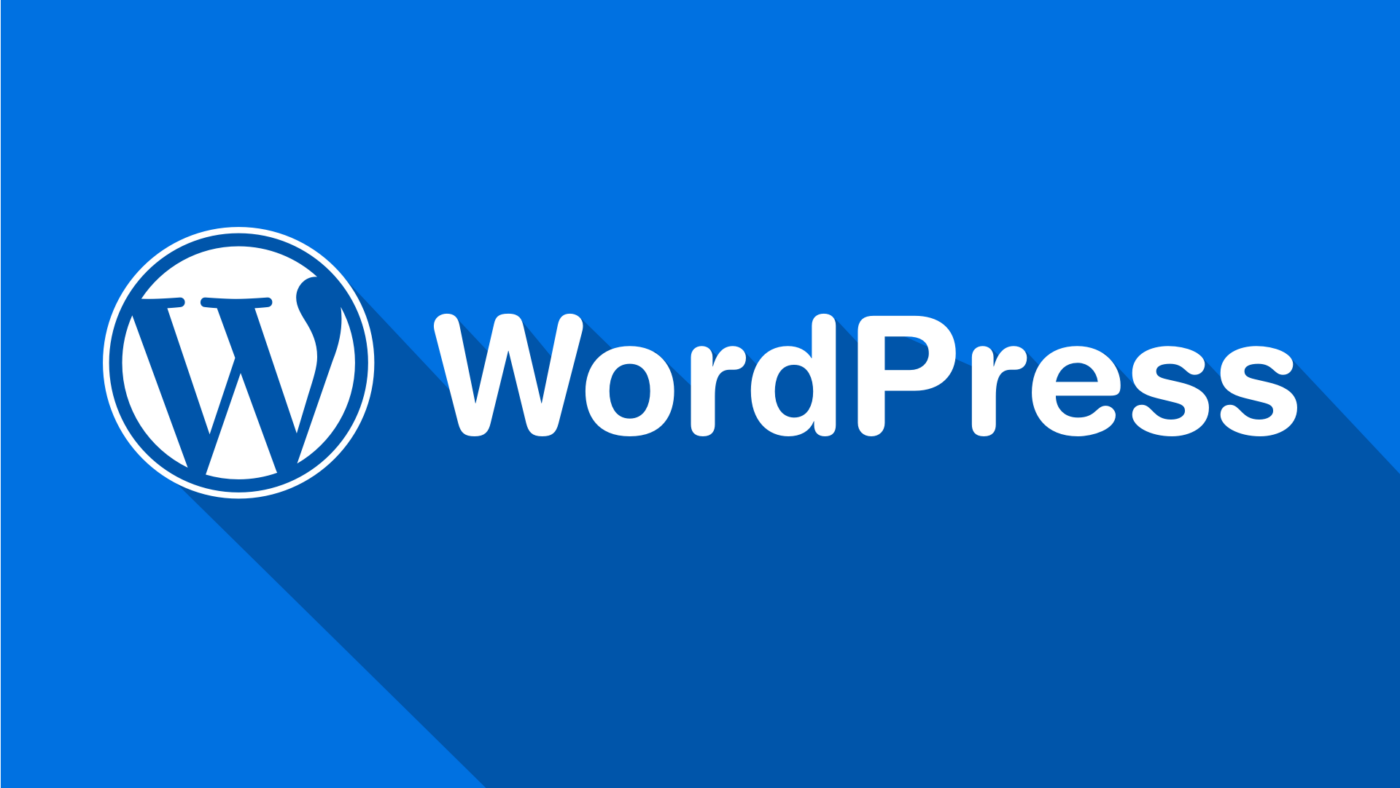
In this article, I will show you the most effective SEO standard article writing tips.. Not only that, it also comes with many illustrations for you to easily follow.
In addition, those who use WordPress will get more benefits, because in the article there is a lot of specific information, which can be done right away.
Mục lục
Is it difficult to write standard SEO articles?
As the title of the article clearly states, writing standard SEO articles is really not difficult. None of these tutorials require too much skill or a lot of money to buy tools (most are free).
What can be called difficult in this, is whether you have the patience to apply all (or most) of the criteria. Because SEO if not done properly is very difficult to get a good position, simply because there are always thousands of content similar to yours (which other sites have written), and many of them have worked very hard!
Let's see how many articles on the topic "Writing standard SEO articles":

So I have to compete with 6130 content on the same topic! In other words, to get into the top 10, I have to overcome 6121 opponents, it's not easy!
What to prepare?
Sometimes you think of a topic and then just type, release your soul with the keyboard and create a standard SEO article that ranks in the top 10 of Google after 6 hours of hard work. However, this rarely happens, it can only happen when you are extremely knowledgeable about the topic to be written. If not, we need to do a few things first:
- Understand searcher intent : Every search is always accompanied by an intent, whether it's for the purpose of finding information, there is a re-search with the intention of buying a product, or just for a pre-survey, et cetera. Understanding this intent will help you navigate more relevant content;
- Research the main keywords that need SEO and related important keywords if any : For example, in this article, the main keyword for SEO is "write SEO standard articles", in addition, people often search for keywords like " standard SEO articles”, “how to write standard SEO articles”, “check articles”, etc
- Check out other top articles to see what's special about them : imitate their beauty, but be selective and write your own;
- Aside from the text, do you intend to add any other compelling content? such as illustrations, infographics, videos, audios, etc. But be careful not to cram to get it, if it's more useful to new users you should add it;
- How do you intend to make your content unique , different from the content of other websites. Differentiation is especially important in a context where users can find a wealth of information on almost any topic;
- Last and most importantly, combine the above points: how to make your content better? Because if your page doesn't make it to page 1, the chances of it getting traffic will be very low (if not extremely low for keywords with low search volume, very few people come to page 2, 3,…). Honestly, I'm also worried about this song not making the top 10!
Summary of the most important factors in standard SEO articles

Now let's get into the specifics step by step.
Optimizing keywords in writing standard SEO articles
Keywords are still the first thing to consider when writing articles.
1. Title with keywords
Quick tip:
- Pay special attention to this when SEO with long keywords
Everything starts with a title. Normally, our titles always have keywords, but sometimes with long-tail keywords you might not notice and put the title without the complete keyword phrase (exact match). While in English this does not affect much, in Vietnamese it has a relatively strong influence, because Google's Vietnamese understanding level is much worse than English.
For example, for this article (the keyword is “writing seo standard articles”), the title: “ 30 tips for writing standard SEO articles : easier to do than you think ” (1) will be better than the title “ how to write standard articles ”. SEO : 30 easy-to-do tips ” (2).
The reason is that the title (1) contains exactly the keyword phrase that needs SEO, while the title (2) messes up the keyword order (although the meaning does not change much).
2. Keywords appear early in the title
Quick tip:
- The sooner the better;
- But need to avoid losing nature;
This means that for this article, a title like " 30 easy-to-follow, highly effective SEO standard article writing tips " will probably be better than the title " How to rank high on Google: 30 standard article writing tips" SEO “.
This is because Google may value keywords near the title more than keywords at the end of the title.
3. Avoid titles that are too short or too long
Quick tip:
- Standard is 50 – 60 characters;
- Completely different standards where necessary;
- Think more of the reader when setting the title;
Titles that are too short will reduce your keyword optimization potential, as well as your ability to provide more useful information to users, and finally, before a reader clicks on your link, they must read it. title! So, a title with poor content will definitely reduce the rate it gets clicked on the search results page.
For example, I don't dare to title the article as follows: "Write standard SEO articles"
It's too short, by no means does my article include more than 40 tips, and they are complete and relatively easy to follow step-by-step instructions. These are all important information that is likely to attract users.
Conversely, a title that is too long is related to the fact that Google has a limited title length displayed on the results (SERP), so if it is too long, it will be truncated to… like this :

Google limits title lengths in px (pixels), but a better way to estimate titles within the limit is between 50 and 60 characters.
The last thing regarding title length is that while it is quite important, the perception of the final reader is more important. If a longer (or shorter) title is generally more useful to the reader, don't be afraid to use it (the article you're reading here also has a longer title than usual).
As a further proof, did you notice my “anchor text” article above, which ranks #1, despite the relatively long title. And just below is a very short title but still ranked very high is number 2.
The next question that people often ask, is how to write a good headline?
One of the simplest ways to write quality headlines (at least enough) is to see how the top 10 pages write headlines. But don't copy 100% of any page's title, because that's not good for SEO, the important thing here is that you should see the idea, the highlight in their title and then write your own title. only me.
For example, if you are going to write an article about “how to choose a badminton racket”, see what the top 10 titles include:

You will quickly realize that the titles of these articles emphasize the following points:
- Include numbers in titles : they use words like “ 5 ways ”, “ 7 ways ”, “ 9 points ”…Up to 6/10 titles have numbers;
- Detailed instructions : they use words like “ to the teeth ” or “ to the most detail ”;
- For newbies : they use words like “ for newbies ”, obviously the people who look up this keyword are definitely newbies;
- Emphasis on conformity : they use words like “ standard ”, “ satisfactory ”, “ consistent ”, “ correct ”;
- Cost : they use words like “ affordable ”;
- Technical factors : they use words like “ parameters on racket ”;
These highlights are exactly what the searcher is interested in, you need to combine with your existing knowledge of the topic to create the appropriate title.
P/S: I have an article on this page about how to create SEO standard title, you can refer to it for more.
4. Use English synonyms in titles when necessary
Quick tip:
- Do not try to punch sticky rice;
There are many notions that English has content before and is richer than Vietnamese, it goes into many documents and becomes familiar to people in that field, then users can look up keywords. English.
For example, even though the word “internal linking” is very popular in SEO, people still look up internal linking for its English keyword. And now if you don't have this keyword in your title (and content), you might be missing out on potential traffic.
That's why I titled the post like this:

For the same reason, in my article on “anchor text”, I added the word “anchor text” to the title:

5. Keywords appear in the first 100 words of the article
Quick tip:
- Detours are foolish with content on the web;
Keywords appear in the article as soon as possible and SEO people often take the first 100 words to make them easy to remember.
Most people will meet this criterion without difficulty. However, if anyone has a habit of writing around the Three Kingdoms, it may take up to a few hundred words before the keyword appears, if this is the case, you need to be alert to overcome it. Most readers on the web want to get straight to the point.
For example, in this article, I have included the keyword "Writing standard SEO articles" in the first 20 words:

6. Keywords in h2, h3 . tags
Quick tip:
- Yes, it's fine, but it needs to be natural;
These are the headlines in the article, and the keywords that appear here are often better than nothing, of course you should not force them.
For anyone using WordPress, h2, h3 tags are used through this widget:
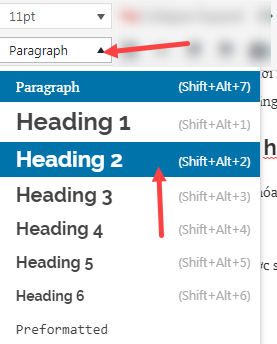
7. Avoid keyword stuffing
In the past you could fool Google with keyword stuffing (a trick that makes keywords appear as many times as possible in a document), but ever since the Google Penguin algorithm appeared, content has been stuffed with words. The key has dropped dramatically.
Keyword stuffing articles are easy to spot, as it often loses its naturalness, for example:
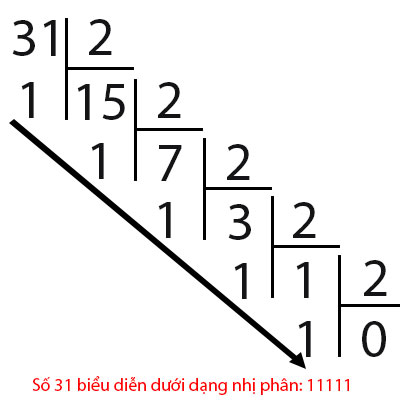
The keyword “old books” is repeated too much in the above paragraph.
8. Avoid keyword ratio too low
Keyword ratio needs to be in the medium range. If you keep the ratio too low it's not good either. So which number is appropriate?
There is no ideal number, but 1% – 2% is considered a safe threshold.
However, if you write naturally, without affecting this ratio too much, a little lower is okay.
P/S: keyword density formula: (100* (Keyword occurrence * number of words in keyword)) / total number of words of the article.
For example, let's say the keyword "writing SEO articles" appears 15 times, and this article has 6000 words, then its keyword ratio is:
(100 * (15 * 4)) / 6000 = 1%
For those who use Yoast SEO on WordPress , when your keyword density is low, Yoast will warn you:

Translated:
Keyword density: Your target keyword phrase appears twice. It's 16 times less than the minimum for text of this length.
9. Choose a short URL for the article title
Quick tip:
- URLs with main keywords need SEO;
- The length is between 3 and 5 words;
SEOs love short and descriptive URLs. This involves keeping things short and less cramped. For example, when you share a link, the short URL will show all, not truncated like the long URL, it also doesn't make you worry about taking up too many words (some social networks limit the word count). you want to share). Candlestick).
By default, WordPress will remove your title and add hyphens between words to make URLs, for example, this article will have a URL like: / 30-meo-viet-chuan-seo-de-lam-hieu- cross-high/
That is way too long!
In general, a URL containing 3-5 words is beautiful, and only needs to contain the most important keyword, specifically, I modified this post's URL to: / viet-bai-chuan-seo/
With WordPress: you just need to click the Edit button and edit it as you like, note that you need to write the form without accents:

P/S: Once I saw an article with title URL longer than 20 words (article content is great, only url is too long):
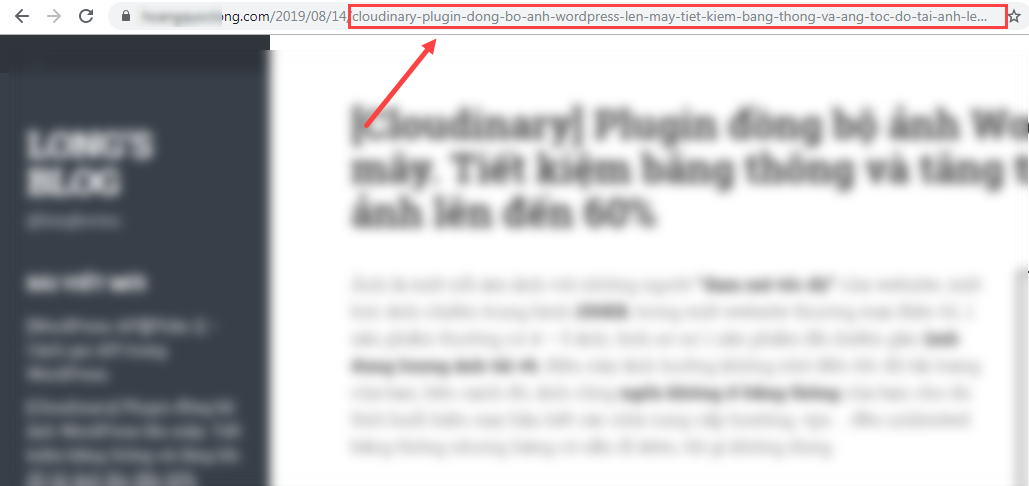
10. Write meta description if you are confident
Quick tip:
- Summary of the main content of the article;
- Should have early start keywords;
- Approximately 160 characters in length (can be longer if needed);
- Write naturally;
The meta description tag is no longer as important in SEO as it once was. But if you are confident to write well, it is highly recommended to write content for this tag, because it has the ability to support SEO in a roundabout way.
The goal of the meta description is to provide an overview of the article, and Google, as well as other search engines in general, can use it to show up in search results (in most cases). fit). search engines themselves extract the content of the paragraphs it deems most relevant to the user's query), for example:

With WordPress: To write the meta description tag you need to use a certain SEO support plugin, such as Yoast SEO , then go to the edit section (Edit snippet):

Next is to enter the content:

Bonus: Avoid duplicate keywords
Sites that write heavily may have duplicate keywords. That means you have many different articles on the site with the same SEO for a given keyword. This is bad for SEO in a number of ways:
- If the content of the two articles is quite different, you will not be able to create two SEO articles for the same keyword, you can combine the two to create a more quality article.
- If the content of the two articles is quite similar, then there's no reason for you to create two!
- Also in all cases creating 2 articles will disperse internal links and backlinks (if any). If your site only has one post for one keyword, then at least internal linking will be more focused.
How you avoid duplicate keywords. Simply, before writing a topic, you should first search your site to see if it already exists?
The search operator will be: the topic you intend to write site:your-domain-your-.com
In addition to the above, for those who use WordPress and install the Yoast SEO plugin, they will report the phenomenon of duplicate keywords if any:

This keyword has been used before: You have used this keyword phrase once before. Keywords should not be used more than once.
Click on the link that the arrow points to, you will see posts that overlap with the one you are writing.
Optimizing links in writing standard SEO articles
Links are the most important factor in SEO.
11. Internal Links to Other Related Articles
Quick tip:
- Must be really relevant post;
- Good post quality;
- Bonding should not be too thick;
Internal linking is one of the best ways for you to help your article SEO, the reason is because Google's important algorithm PageRank depends a lot on links (P / S: the paragraph you just read has 2 internal links!)
The important thing about internal linking is that it should be natural, in other words, don't add internal links just for the sake of it, this won't go unnoticed by Google, it might even backfire.
A famous example of internal linking is Wikipedia, for example here is an excerpt from the article about Trinh Cong Son on Vietnamese Wikipedia:

The blue text are all internal links.
Of course, most of us don't have as many internal linking rich articles as Wikipedia.
12. Internal linking to the very article that you need SEO
If the article that you need SEO only internally links to other pages that by itself have no internal links pointing to it is very bad for its rankings. In SEO terminology, this phenomenon is known as “orphan pages”.
To find potential links for new articles, simply search for keywords like this on Google: “main topic of the article” site:your-domain.com
For example:

This way, you can find other articles on your site that are likely to link to the article that needs SEO.
P/S: Sometimes it's not easy to add an internal link in the style of just pasting the link. Sometimes it takes extra writing to get natural linking context and favorable anchor text for the keywords you want to SEO.
13. Pay Attention to Internal Link Anchor Text
The main link text is this. Roughly speaking, it is the text that is likely to be clicked.
You should have anchor text containing keywords that need SEO, but should have rich anchor text.
For example, the article itself might have anchor text like:
- Write standard SEO articles (exact match);
- Standard SEO articles (slightly reverse order);
- How to SEO content (closely related);
- kiencang.net/viet-bai-chuan-seo (naked URL);
If you only leave anchor text as “SEO standard text” on all internal links, then Google will not appreciate them and you will miss out on SEO opportunities for keywords that are close in meaning to the main keyword (eg. For example, people can look up the keyword "how to create standard SEO articles")
14. Point out links when necessary
Quick tip:
- Quality, at the right time, at the right place;
Don't be afraid that outbound links will cost you anything, in fact sites with good rankings often point out links to external sites.
That's because there can't be any website that can cover every topic, and if something outside is well-written and yours isn't, link back to that topic. Lots of useful information for the reader. It is important that you link to a reputable site and in the right context.
P/S: again, external links need to be natural as well. There is content that is easy to link to external sites, such as content that covers a broad, knowledge-based topic. On the contrary, there are pages that are not linked to an external site, such as a product sale page, because it is possible that the customer will redirect to the external page before adding the product to the cart and completing the payment!
You need examples? Try looking up the keyword: kindle reader .
In the top 10 I see 2 links suitable for illustration.
The post in #2 is from the e-commerce site Tiki, they sell products , you won't find outbound links:

For page number 7, you will easily see a lot of external links, this is a review of the Kindle e-reader, not a sales page:

15. Open external link in new tab
External links are useful additions to your website, but honestly, you don't want people to click on your external links and then leave your site and sink into your external website. out there!
One way to fix this is to open the external link in a new tab, then your page is still in the old tab and the user can easily go back without having to press the back button again and again (what if out when they view multiple pages in the same tab). external links).
This tip is especially useful for desktop and laptop users.
For example, an article reivew free photo editing software on Mobile World page, the external link opens in a new tab:
With WordPress: How to do this, click on the link, click on the pen image, click on the gear image and select "Open link in a new tab":

If you're lazy (like me), you can use a plugin to enable all outbound links in a new tab by default, instead of having to do it manually as above. That plugin is called: External Links in New Window / New Tab, you just need to install and activate it.
P/S: for internal linking, in most cases you don't need to open the external link in a new tab.
16. Use the nofollow tag if necessary
Quick tip:
- For untrusted external links;
Sometimes you need to externally link to a page that is not really authoritative or has much to do with the topic of the article (in an unimportant example, for example). You should then add the rel="nofollow" tag so that search engines know that you don't take the page seriously and that Google doesn't pass PageRank to such pages.
Adding the rel="nofollow" tag manually is not difficult, you just need to switch the mode from Visual to Text, and then add the appropriate code to the <a> tag, for example:
<a href="http://www.ezinearticles.com/" rel="nofollow"</a>
With WordPress: This may not be interesting to those unfamiliar with code snippets. Fortunately, you have a plugin that makes it easy to add this attribute to your links, you just need to install and activate the plugin called: Rel Nofollow Checkbox. Update: the new WP editor now has this feature available.
Then, every time you need to add just click the link, click the pen, click the gear, and then choose nofollow:

17. There are related articles at the end of the post
Quick tip:
- Related articles should include illustrations;
- There should not be too few or too many related articles (from 3 to 7 articles is fine);
- Take the initiative to add manually when possible, instead of using automatic features all the time;
The related article at the bottom is very important, it increases the chances of users staying on your site if they see the next interesting content.
Like everything else related to links, related posts need to be really relevant.
Many themes have the feature to automatically add related articles at the end, which is nice but you probably shouldn't!
Why?
Since auto related posts are sometimes not what we mean, we recommend using a related posts plugin that can be customized to your needs (like having profile picture, title length, etc.) topic and importance). most importantly select the specific link you want to add).
With WordPress: There are many plugins to help you with this, one of my favorites is: WordPress Related Posts by Sovrn, zemanta
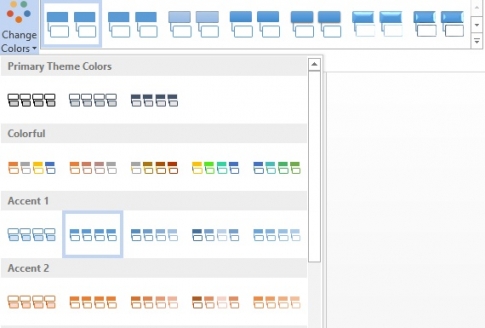
Optimizing images in writing standard SEO articles
A picture is worth a thousand words, but sometimes it doesn't!
18. Use your own photos if possible
Photos you create yourself are better for SEO, simply because those photos have never existed before (search engines have the ability to recognize the same images across web pages, it always evaluates them). high original content). than copied content).
Self-portrait is not difficult, a smartphone is enough for you in most cases, and it is important not to limit your ideas to photography, or in other words “your writing says on “topic A” but you are not. It is imperative to get a 100% photo of subject A. Sometimes a evocative photo is much more appealing.

The picture above is taken by me to illustrate the article: convert JPG and PNG images to WebP
19. If reusing photos, choose carefully
It is not always easy for you to create your own photos, if you need to create an article on the topic of "Snow in Sapa", it will not be easy to get such a snowy photo.
Then a photo reuse solution is necessary, but choose carefully:
- Stay away from stock photos : they are easy to create a fake feeling;
- Avoid Piracy : Copyright infringement can cause you to drop in rankings if the original site submits a DMCA claim to a search engine;
- Find free images : there are many free stock images, even if you apply them to commercial articles. Some good stock photos are pixabay, pexels, and especially flickr (P/S: I'm pointing out useful external links). With flickr, you need to use its filters to filter out potentially free-to-use photos. For example:
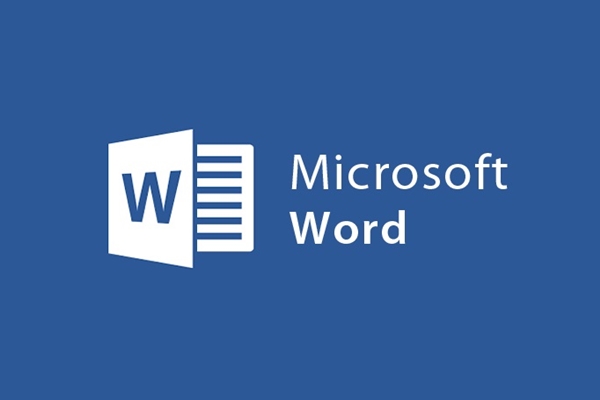
20. How to choose an image to represent the article
Quick tip:
- Choose descriptive images for the whole article;
- The image must be sharp;
- The image is large enough to use;
Many content management systems, including WordPress, have a feature to choose a featured image (Set Featured Image), which makes the article content more intuitive, beautifying the article as well as the website:
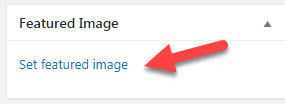
Choose your post's profile picture as carefully as you would choose your Facebook profile picture!
You should choose a descriptive image for the entire article. It is also important that the profile picture is large enough, usually at least 600px and perfect, 1000px or more, this ensures that when we share the post on social networks, the profile picture will appear. full (rather than a small photo in the left corner), making the post look better and stand out:
In addition, the image has a large enough capacity to help users when browsing the folder to see photos without being broken or blurred. Because if you use a profile picture that is too small, it is likely to be enlarged to the standard size and that makes the image poor quality, for example like this:

21. Choose a descriptive image name
Quick tip:
- Fix default image names to descriptive image names;
You should not have an image named like this: IMG_4002.jpg, this is the default image name style and it is considered bad for SEO.

You should edit the image name to be descriptive for its content. For example, the blurred image above is named: anh-bi-vo-mo.jpg
Note that it is recommended to set unsigned, because placing with accents may cause display errors.
22. Choose the right image size
Quick tip:
- The image should not be larger than the width of the website;
- Small images should be aligned to the right or center, not left;
Big picture is always better and sharper on many screens from small to large. However, you should limit the image size to a certain threshold, because larger images will take up more space and slow down the page speed, adversely affecting SEO.
For example, in most themes these days, you don't need the image to be larger than 800px wide, because that's enough for full display. Also, you don't always need large images, sometimes you will find small images more appropriate in posts (except for the profile picture, a large enough size is always better than a small image).
To view the image size on Windows, right-click the image, select Properties, and then switch to the Details tab:

23. Use ALT for images
Quick tip:
- Every image needs ALT;
- ALT should have keywords that need SEO but are not required;
- ALT should not be too long;
When it comes to image SEO, the content in the ALT plays the most important role, because currently search engines in general do not have the ability to see images the way humans look (especially in terms of emotions, and things like the size, color, of the image, the machine has long passed us).
With WordPress: you can easily add content for this tag in the edit section, you just need to click on the image and select edit, then enter the content in the corresponding field:

Another note is that you should not write too long alt content, short enough. Content that is too long can be misinterpreted by search engines as spam.
24. Use captions when necessary
Captions are used to further describe the image, while alt is for search engines, captions are for our readers.
With WordPress: the same operation as adding ALT, only this time you add content to the caption field:

There are 2 points to pay attention to with captions:
- Only when necessary should you add captions to photos, especially with photos that need more explanation for easy understanding. For images that are self-explanatory, there is no need to add captions;
- Caption can be long, it's not limited like alt. However, write naturally, don't write long captions just for SEO;
25. Don't care about the title of the photo
At the present time, many SEO people think that the title has no SEO effect, so you don't need to pay attention and save time.
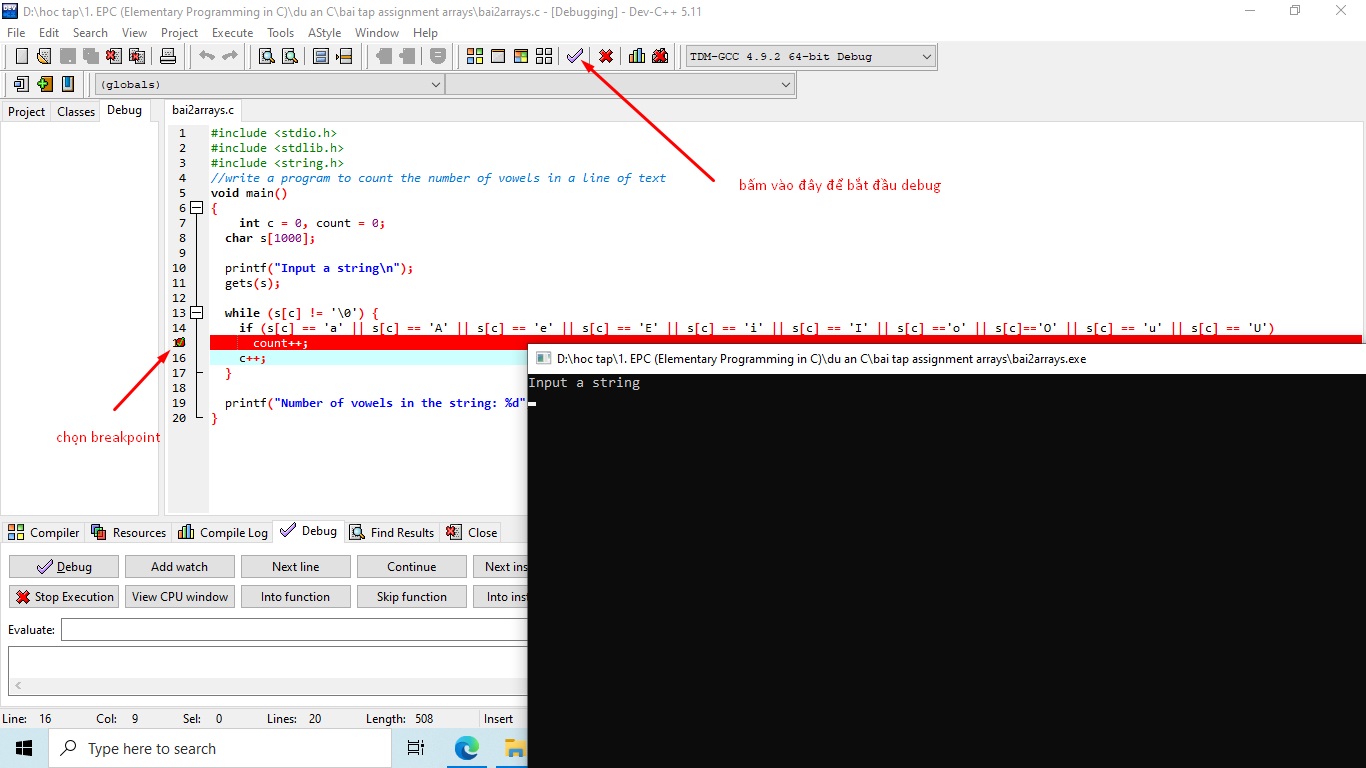
26. Use the right image format
Photos come in many formats, such as jpg, png, svg, gif, webp, etc. Each has its own advantages. And you should choose according to the advantages of each type:
- jpg : suitable for colorful photos, like life shots;
- png : suitable for images that need less color, like screenshots, or need transparency properties;
- gif : suitable for animation;
- webp : if you need to reduce the image size to the maximum;
Selecting according to advantages will give better images and especially the capacity will be much better. See the following example:
The two images below are exactly the same, but the sizes are very different due to their different formats:

The experience here is that you should not save life photos in PNG format, use JPG because it gives a much more optimal size.
The experience here is that you should not save screenshots in JPG format, using PNG not only gives a significantly lower file size, but often gives better image quality.
27. Optimize image size
You already understand why it's important to optimize image sizes, but size isn't just about choosing a format.
An extremely effective way to reduce the size of an image is to compress it. There are two basic compression methods:
- Image compression loss of quality : the image size is reduced a lot, but the quality is also reduced;
- Lossless compression : the image size is reduced a little, in return the quality remains the same;
In most cases I would recommend using lossless compression just to be safe, as lossy compression sometimes results in very low definition images, thus adversely affecting quality. content (when your site has thousands of images, you won't be able to manually check which images are still good after compression and which are bad, a good fallback is to sample to give results relative) exactly in case you want deep compression).
Example of an over-compressed image:

Its original image is much sharper:

With WordPress : There are many plugins for you to optimize your photos, such as:
- EWWW;
- ShortPixel;
- reSmush;
The role of language in writing standard SEO articles
When the search engine is as difficult as your literature teacher.
28. Correct spelling
Văn bản xai nỗi trính tả đọc dất khó trịu (let me translate it for: Spelling errors are very annoying)
Because the reader will have to spend time reinterpreting the exact meaning of the word (misspelled words can create a different meaning or at least make up a non-text word). Therefore, it is not difficult to understand if articles with many spelling errors are downgraded.
One of the ways for you to limit spelling errors is to read a lot, choosing quality books (for example, fiction, science books) from reputable publishers (or from quality authors and translators). It not only helps you spell better, but also helps you have a rich vocabulary.
Currently, there is no convenient plugin or application that can automatically check Vietnamese spelling (convenience here means that both editing and detecting spelling errors). For English yes, you can use Chrome apps like: Grammarly for Chrome or Ginger.
P/S: local pronunciation doesn't matter, each region has its own tonal characteristics, and we should respect that diversity (you may find broadcasters use different types of radio stations) . members from different regions), but the spelling should be consistent.
29. Write with correct grammar
Spelling is easier to spot mistakes, but grammar is not so simple.
Grammatical errors are very common if you regularly translate articles from foreign languages, and the translation is not excellent. For example, you translate with a strange structure or Vietnamese usage (I must admit, I often make this mistake when translating!).
The best way to avoid this is to carefully re-read your writing and correct any unsatisfactory areas.
30. Avoid using sentences and paragraphs that are too long
Online readers have a type of skimming to get the main idea, not reading attentively and carefully like reading a book.
That's why you should keep your sentences and paragraphs short. Avoid "walls of text" like these:
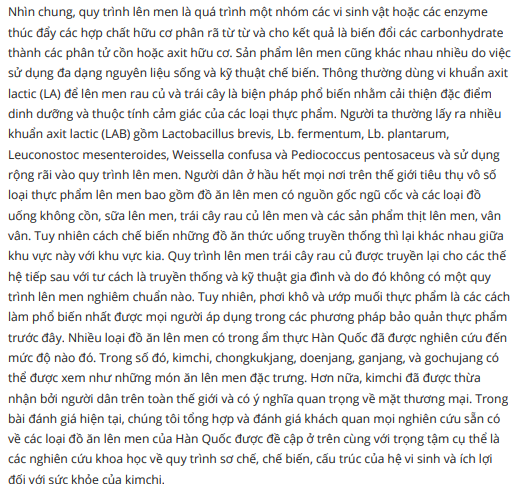
One of the most effective ways to avoid overly seamless paragraphs is to use bulleted lists when necessary, like this one.
Our full spa services include:
- Accommodation for two nights ;
- Two 50-minute Spa treatment options ;
- Two in-room breakfasts ;
- Gift basket on arrival ;
It would be better like this:
Our All-Inclusive Spa includes two-night accommodation, two options for 50-minute spa treatments, two in-room breakfasts, and gift baskets on arrival.
31. Avoid repeating words
I don't know if many of you repeat this mistake, but personally, if I'm negligent, I often repeat words, for example:
Writing standard SEO articles is very important, because even if the article is attractive and interesting, no one reads it, or too few people read the article, it will greatly reduce the use of the article.
There are 5 bài in a sentence of less than 40 words, the sentence is still clear, but it is much worse or worse.
To reduce word repetition you can do the following:
- Use pronouns instead of nouns : for example, the word in the article above can be reduced in number by replacing it with that word;
- Use synonyms : instead of writing SEO all the time, you can write search engine optimization;
32. Font, font size and general font color of the content
Quick tip:
- Target the most important customer group;
Try reading this:
It has a very small font size, and the color is too dim. Most people won't feel comfortable reading it. And if users are not comfortable then it is not good for SEO.
Some tips:
- Use fonts that are easy to see : especially avoid fonts that display Vietnamese errors, such as this:

- Font size should be avoided being too large or too small : there is no ideal standard in choosing font size, for example older people may need larger font sizes than younger people. It is important that you understand who your main target customers are to make the appropriate choice. If you still need a specific number then a font size of 16px to 22px is fine in most cases.
- Font color should be avoided too dim or too contrasting : both of these cases make the text harder to read. Completely black text on a white background is too contrasting, making it easier for the human eye to get tired.
How do you know what font, size and color a website is using? It's simple, use the addon called WhatFont for Chrome browser. After installation, click on the icon and then click on the text on the website to be checked, for example, this is the font information on the Ant page:
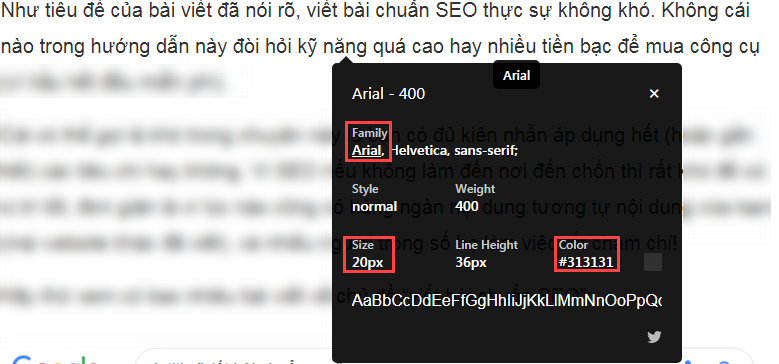
The font I use is Arial (a safe font, available on the user's computer), the font size is 20px, and the font color is #313131
33. Bold, italicize, underline text when necessary
Quick tip:
- Use only when necessary;
With text that needs emphasis , you can do many ways to make it stand out from the text next to it, for example:
- Bold ;
- Italics ;
- Underlined;
- Change the color of the text;
- Change the background color of the text;
- ALL CAPS;
- Capitalize First Letters;
- Make the font size larger than usual
- Change font (rarely used);
One thing should be careful not to overdo them. Because if something is emphasized, you are not emphasizing something.
34. Use own text formatting structures when necessary
There are many unique text formatting styles that you can use to make it more attractive, such as:
When you need to caption someone's sentence
Or tabular content:
| 5 most populous cities in the world | Population |
| Tokyo, Japan | 38 million people |
| Delhi, India | 26 million people |
| Shanghai, China | 24 million people |
| Mumbai, India | 21 million people |
| Sao Paulo, Brazil | 21 million people |
If you want to make the table easier to manipulate, such as sorting the data (high to low or low to high), you can use the TablePress plugin.
Or align the text left, right, and both sides.
Another example that you may also use very often when the website sells different product packages, is the presentation of the price column, the content is easy to see, easy to distinguish the features. Such as:

One of the WordPress plugins that do this well is: Responsive Pricing Table .
Multimedia content
Letters are not everything.
35. Infographics
Quick tip:
- Infographic must be beautiful, if not beautiful, do not use;
Using infographics when appropriate will make your content much more “digestible”.
For example, see how beautifully and wonderfully presented Nadal's tennis career is in the infographic below:

Some people may complain that making infographics is not easy, my answer is: yes! And because it's not so easy, it's valuable in SEO.
Anyway, at the moment you have a lot of online tools (both free and paid) that make creating infographics relatively easy.
Another simple way is to translate from foreign infographics, for example, this mini infographic was translated by me from Hubspot, then use the tool to edit:
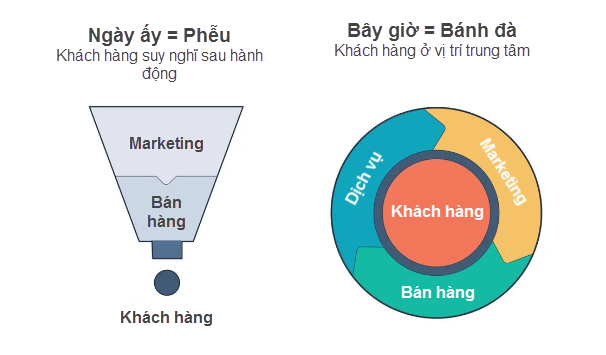
The article itself also has an infographic if you notice, it is located at the top of the article. Learn more about infographics here.
36. Videos
Quick tip:
- Strokes;
- No shaking;
- and Clear Audio;
Video creates a feeling of liveliness and intimacy. It is a very useful addition if you want to make content better and more receptive.
There is also a point worth noting: not many websites have video in the article, because making a video is not as easy as typing, it is even more difficult than making an infographic in many respects… So you will create differentiate and have a huge competitive advantage when adding video to text content.
Another point worth noting is that the video you put on youtube you can create backlinks about the article in the description, it has the ability to increase traffic to the page, especially for videos with many viewers.
37. Audio files
The audio isn't as engaging as the video, just like the radio is now being absorbed by the television.
However, in the right context, adding audio to the article still makes a significant difference.
Audio can be put directly on the website, because usually it is not very heavy, more than 10 minutes say maybe only 1-2MB of data, but people still recommend uploading to intermediate sites to avoid affecting performance. . storage space (especially in case the file has a lot of listeners or your server is weak). A great site for you to post audio files is SoundCloud.
Petty but can still be important
A small scratch can ruin the beauty of a lot of things.
A visual example is a phone screen. Um, I guess you're looking at your phone to check!
38. Choose a clear, simple site structure
This should be done when you first set up your website, but it's not too late to change it now.
Important note: if you change your site structure after you have a lot of articles on your site, it will make the old URLs inaccessible (404 error), then you need a redirect to redirect redirect old URLs to new URLs.
Website structure has many styles, for example: example.com/2016/09/15/ten-bai-viet/ or example.com/24521/
This is not a good structure, as in most cases the date is not useful and can also make the reader feel that the article is too old, of course it makes the URL unnecessarily longer. necessary, needs. The structure to format the post id number reduces the descriptiveness of the URL.
There are two highly regarded constructs that you should adopt:
- Super concise structure : example.com/ten-bai-viet
- Structure with directory : example.com/ten-thu-muc/ten-bai-viet
With WordPress:
To edit the site structure, you need to go to Settings > Permalinks (Settings > Static Paths):

Exclusively for WordPress: Plugins that support standard SEO articles
These plugins, once installed, you will not have to repeat the optimization operations related to them in the following articles.
39. Install a cache plugin
The caching plugin helps speed up the site (one of the important ranking factors), and this is indispensable on unoptimized hosting plans. Some reliable plugins in this respect are:
- Cache Enabler;
- WP Super Cache;
- WP-Rocket;
- LiteSpeed cache;
40. Install the Autoptimize plugin
The Autoptimize plugin is very powerful in optimizing HTML as well as reducing size and combining CSS and JS. These are all integral components of the website, and by reducing the size of these components you are helping to improve site speed.
41. Plugins AMP
Quick tip:
- Suitable for websites with simple structure;
Also a very good web speed booster. Help the links on the search results page have a significantly higher access speed.
However, this is optional, as not all websites are suitable for AMP, especially e-commerce sites with many unique features and looks. Simple news sites are very likely to adopt AMP.
42. Install Yoast SEO
Except for those who are too new, almost everyone knows about Yoast SEO. It has a huge amount of installs and is highly rated by users (mostly 5 stars). In actual use, I found it really easy to use and intuitive.
Many standard SEO articles above can use Yoast SEO as a support tool such as keyword density, keywords at the beginning of the title, title is too long, alt with images
43. Plugins that support structured data
Quick tip:
- Especially useful in some specific areas;
Some websites about cooking, movies, books, hotels, etc. could benefit from the addition of structured data, making their sites more informative and prominent on the web. search engine. For example:

44. Plugin to create table of contents for articles
Quick tip:
- Short articles are hardly needed;
- But especially necessary for long articles;
The table of contents helps users have an overview of the article content, it has the same role as the book's table of contents, they can quickly go to the content of interest.
The table of contents also makes your search results richer on Google, with sitelinks for people to go directly to the content they want to read.
With WordPress, my favorite plugin to create this feature is: Table of Contents Plus.
45. Optimizing tags and folders
The articles on the page need to be clearly categorized, this makes it easier for search engines to understand your content. The motto here is still "relevant". You should only put the article in the directory it deserves, for example this article its logical directory is SEO and WordPress:

As for the optional tag, you are not required to add the tag. So in what cases is it appropriate to add tags? That's when you have a bunch of articles on the same topic, but it's not enough or valuable enough to form a directory.
The article you're reading has a bibliography, but no tags:

46. Interface as an important SEO support factor
Quick tip:
- Avoid bad interfaces;
- Prioritize fast speed;
- Match the needs, avoid redundant features;
There are some themes (skins) that are said to be better than others in terms of SEO, that may be true, however the existence of specialized SEO plugins causes a technical SEO gap between the themes. subject. trivial. The truth is that the interface supports SEO in a roundabout way, not directly and purely based on technical factors.
Why?
Simply because the look of a website determines many related factors such as:
- Is it good or bad : a bad interface can reduce credibility, reduce page view time;
- Is it fast or slow : this definitely affects SEO because slow pages are rated lower in the eyes of search engines;
- Its default features : the built-in functions of a good quality theme can support users more than normal themes, thereby supporting SEO. However, only necessary features should be used, not redundant;
The most important thing is that you need to know what your priorities are, do you need a beautiful site or a high-speed site, or do you need a page with some special feature?
For example, I try to strike a balance between aesthetics and speed. Regarding the Cutter site, I prefer speed, it has a simple interface. The theme I choose for it WP Astra, optimized for speed.

More tools for every website
Words aren't the only thing that makes an SEO-friendly article (although it's always super important). The following tools may be a good addition to you:
- Canva: A great free feature-packed graphics tool that helps you create beautiful illustrations. The profile picture of this article was created using the Canva tool. Canva can also be used to create beautiful infographics for free
- Snagit: My favorite screen capture software. Most of the screenshots in this article (and many others on the website) were created by Snagit, and it also has very good screen recording capabilities.
- Ahrefs: Top SEO tool, it will help you a lot in topic suggestion, keyword research, backlink search, and so on. It's just that it's quite expensive. P/S: if you are using this tool, check out our very detailed Ahrefs tutorial.
- Dreamhost, Siteground, KnownHost: Some stable, high-quality hosting services, this is very important for SEO, I am personally using Dreamhost
- Filmora: This is definitely not the best video editing software, even it's hard to get into the top 5, but I like it because Filmora is easy to use and suitable for simple editing needs.
Conclusion
Writing standard SEO content is not as difficult as you think, right? The last piece of advice I'd like to give you is to take deep, slow breaths as you write.















